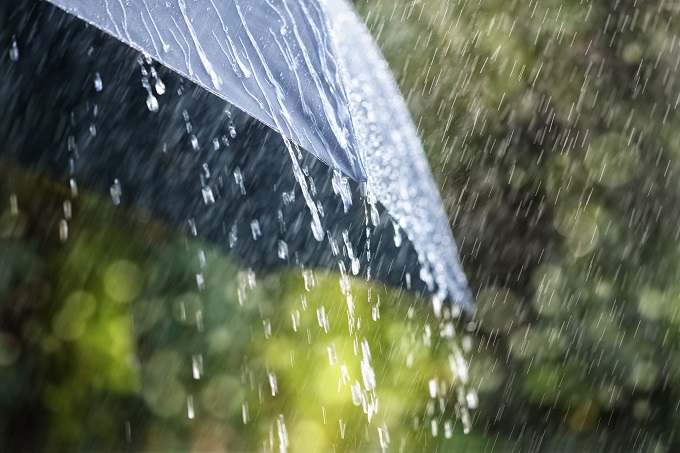
Smells like rain: how indoor air quality can be that refreshing
Imagine entering your guest room and inhaling the scent of ‘fresh rain’ rather than musty mildew or the stale lingering smell of cooking, rotting garbage or something worse still.
First impressions last and you can nip that negative TripAdvisor review in the bud by continually monitoring your facility’s air quality and providing guests with fresh, clean air at all times.
Keeping the air fresh-smelling and clean is a challenge in any enclosed space frequented by people, particularly those guest rooms, which don’t have opening windows.
For general health, wellbeing and safety reasons, human beings require a comfortable indoor temperature with air free from dust, irritants, pathogens, unpleasant odours, mould and mildew and other contaminants.
This is a feature article from our Spring Issue! Check out the full edition online now.
Accommodation managers have a duty of care to provide a safe environment for their guests and staff, and this includes circulating fresh air, controlling malodour and preventing the spread of airborne disease.
Thanks to COVID-19, germ-phobia is at near-hysteria levels, especially with the many myths abounding about the sometimes-deadly virus.
While we know COVID-19 is not transmitted by air, but from person to person through small droplets from the nose or mouth when an infected person coughs or exhales, this fact does little to quell public paranoia about the spread of the virus.
Guests’ expectation of cleanliness is at an all-time high right now and this extends to indoor air quality.
Odours are most often generated from microscopic bacteria, mould and chemicals, which can linger, even after cleaning with strong chemicals and disinfectants.
It’s more effective to prevent or capture them at the source rather than just masking them, and there are some simple and affordable ways to effectively control indoor air pollution. Some ideas include:
- Remove: Ban products and materials that smell or pollute your property. A no-smoking policy is a must.
- Reduce: Put the source away somewhere safe; store cleaning chemicals in a locked cupboard and keep the bin area away from the property.
- Clean: Ensure all hard and soft surfaces are thoroughly and routinely cleaned to prevent mould and bacterial growth.
- Steam: Effectively remove the source of many bad smells with steam. This method is environmentally friendly, using only pure water to penetrate all surfaces, destroying odour-causing residues and leaving surfaces deep-cleaned, sanitised and refreshed.
- Dry: Keep on top of all maintenance issues; neglected leaks and drips cause mould and smells.
- Separate: Keep wet and dry areas apart. Keep bathroom and laundry doors closed to reduce humidity.
- Ventilate: Install an exhaust fan close to the source of pollutants or moisture, such as the cooking stove, dishwasher, tumble drier and washing machine. Open windows and run well-maintained ceiling and bathroom fans when needed.
In addition to the above methods, you can boost your air cleansing efforts with technologies designed to do the job, such as ozone generators.
Ozone odour elimination is popular in the hospitality industry because one machine can be utilised for multiple areas and can quickly and effectively eliminate odours.
Ozone generators can be used to complement traditional ventilation methods.
In addition to opening windows and using fans, many hospitality providers now use ozone generators in rooms as soon as guests check out. This helps sanitise and freshen up rooms for cleaners and incoming guests alike.
Remember, regardless of which odour and air quality control system you choose, it should be appropriately sized for the room; properly installed; used per instruction; and well-maintained. Always purchase from an industry supplier to ensure it is fit-for-purpose.
Industry viewpoint
Geoff Parish, General Manager – Sales Engineer, Oxyzone, gives his expert opinion on the efficacy of ozone generators.
Ozone (O3) has been used successfully for many years overseas in hospitality settings to help improve air quality as it destroys many viruses, bacteria and moulds without the need for harsh chemicals. It is widely regarded as a powerful sterilant and can be used across a range of facilities and applications.
Uptake of ozone generators has been relatively slow in Australia and New Zealand, however this has changed in recent years as commercial entities have recognised the benefits ozone can potentially yield.
Unsurprisingly, there has been a spike in demand for ozone generators in the wake of the COVID-19 pandemic.
Given the need for enhanced air treatment solutions both now and in the future, we believe ozone generators will become a standard fixture of many hospitality providers’ cleaning repertoire going forward.
Combating the nasties
Ozone generators can be used to great effect in hospitality settings where there is a need to sanitise air and remove unpleasant odours.
Ozone is derived from ambient air, which typically comprises 78% nitrogen and 21% oxygen. The remaining 1% consists of a combination of other gases.
Ozone produces an oxidising molecule, which attaches itself to odour producing bacteria. The ozone then breaks down and destroys the bacteria, thereby eliminating the odour.
Ozone is also used in hospitality settings because it decomposes back into oxygen and doesn’t leave any residue.
Used in tandem with traditional cleaning methods, rooms can potentially stay cleaner and healthier for longer.
That fresh rain smell
Ozone generators can be used to neutralise odours in just about every area of a hospitality facility including toilets, rooms, kitchens, bars and garbage areas.
Users often remark on the ‘fresh rain’ smell that ozone generators produce.
This is created by a discharge contained within the generator, which reacts with oxygen to produce ozone.
This process mimics what happens in nature.
When lightning reacts with oxygen in the air, it creates ozone and the ‘fresh rain’ smell we’ve come to associate with storms.
New generation ozone generators
While ozone hasn’t evolved per se as it’s a gas, progress in terms of the evolution of the delivery of ozone is being made all the time.
For instance, ozone generators can now be fitted with more accurate mechanisms that help control the ozone output, making them safer and more efficient overall.
Lucinda is an Industry Reporter here at accomnews.com.au. Find more of her writing in our print publications: Accom News, Resort News and School News.








Ozone is dangerous to your health and also damages some surfaces. Do a quick search on the NSW Health website and you will find a factsheet outlining all of the risks and potential damage to your property.
Hi David, Thanks for your comment! We reached out to Oxyzone to respond to your comment about ozone and here’s what they have said:
“Ozone was first discovered in 1839 and so much is known about its properties, uses and potential risks. As such, it is widely known that ozone can be hazardous if used incorrectly.
Like many substances in industrial and commercial applications (such as chlorine or fertiliser for instance) it is important to be aware of the characteristics of ozone and only use it as directed within the recommended parameters. In line with this, we take steps to inform our customers of the potential risks prior to purchase. With regards to the article cited, it was drafted by government in response to ozone generators being installed without any provision for monitoring or output controls. Progress has been made on this front, and equipment that monitors and controls ozone levels is now widely available to help offset the potential risks associated with ozone. It’s worth noting that our units feature built-in controls. We also strongly advise customers against relying on personal awareness of ozone and that they use ozone monitors to ensure levels do not exceed allowable limits.Furthermore, we recommend that our generators only be used by trained commercial users in unoccupied, well-ventilated areas for short periods to offset any potential health risks. We also advise that anyone who may have underlying health conditions such as asthma or who may be classed as ‘vulnerable’ to the effects of ozone should avoid contact with ozone entirely. We abide by all current laws and standards that govern our industry and take the health and safety of our customers seriously. To date, none of our customers have reported any adverse health effects from using our products as recommended. Should there be any specific questions about our products, please direct them to [email protected]“